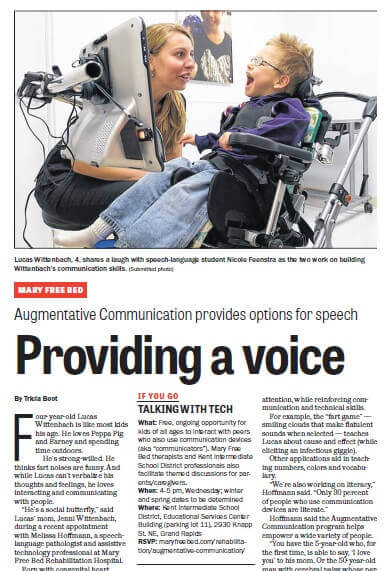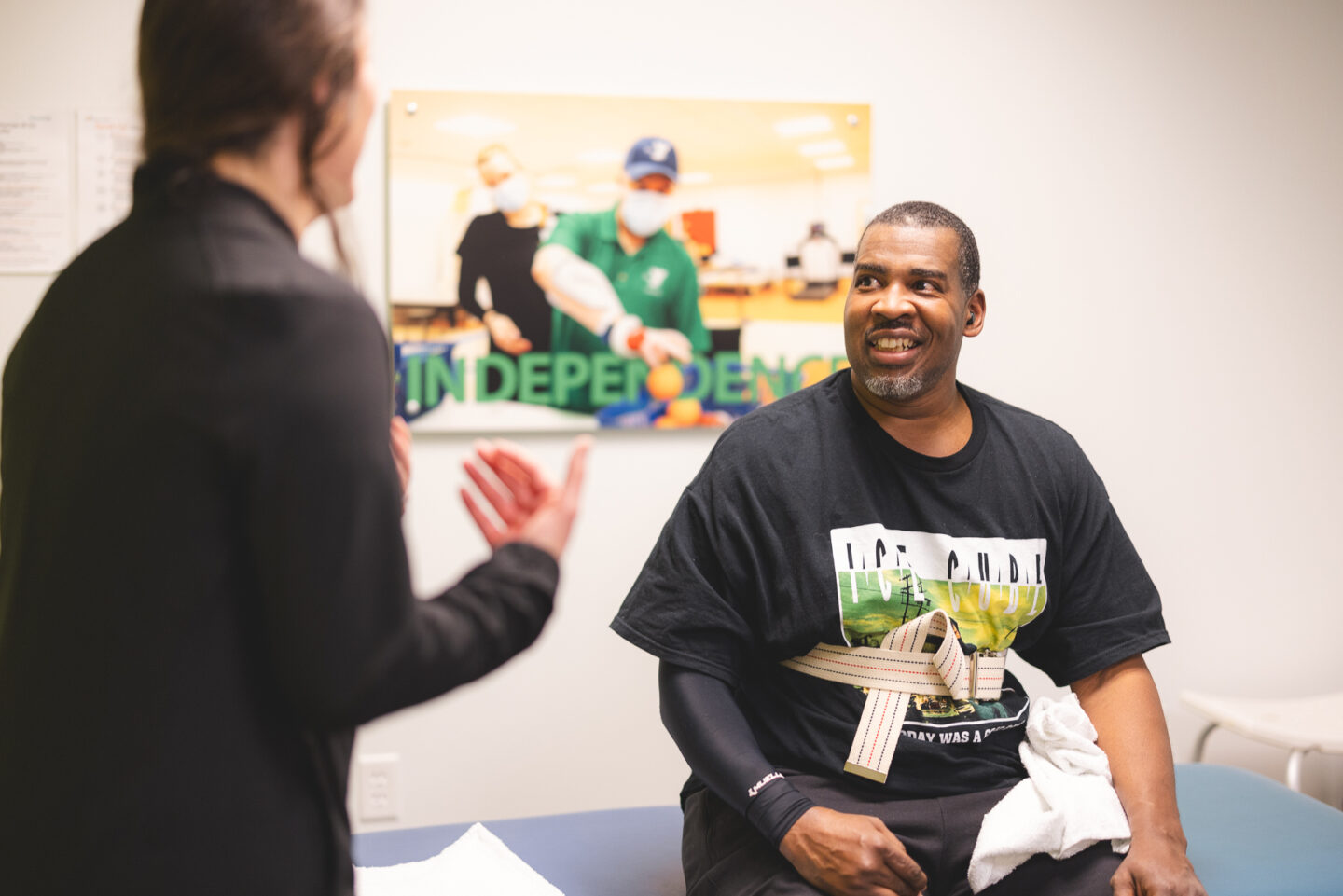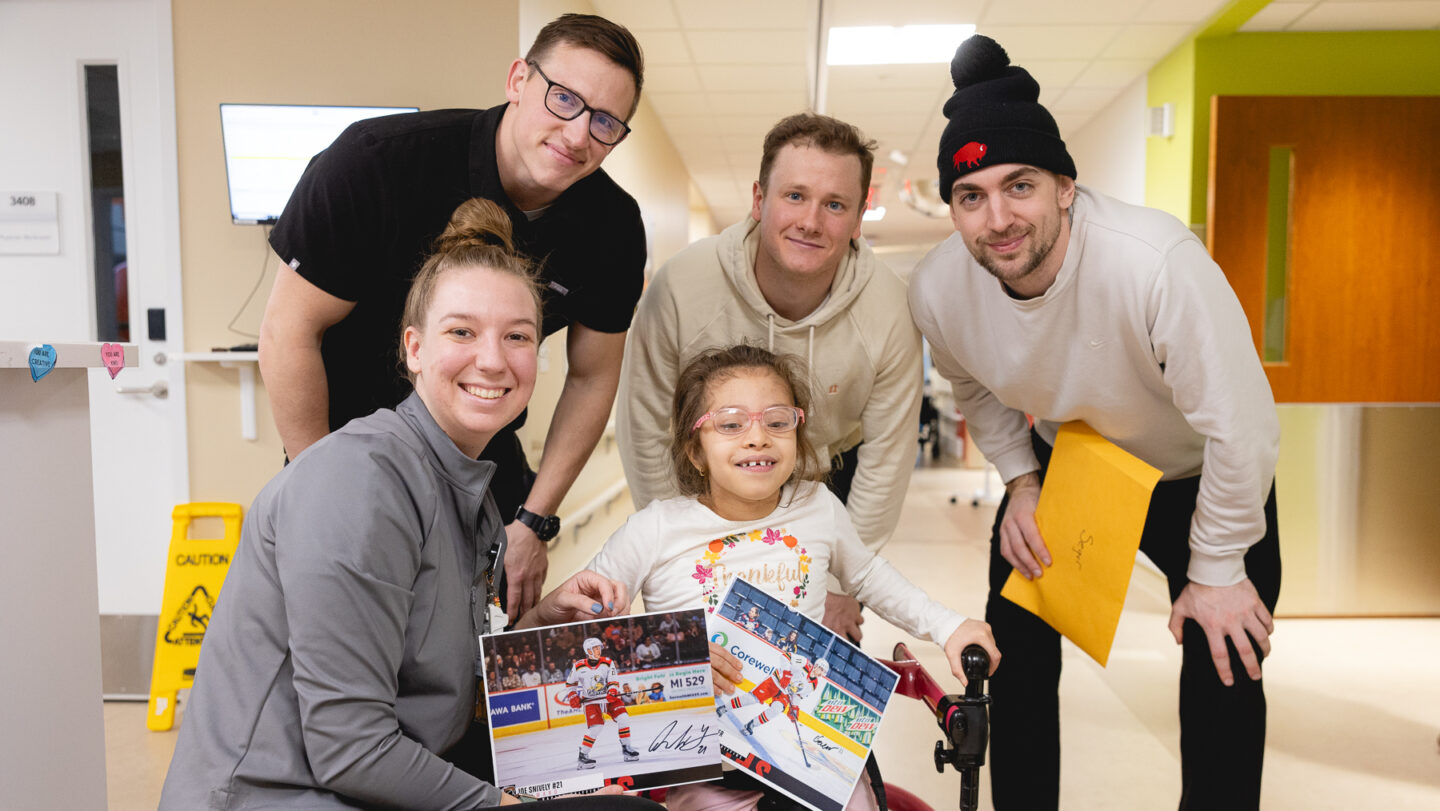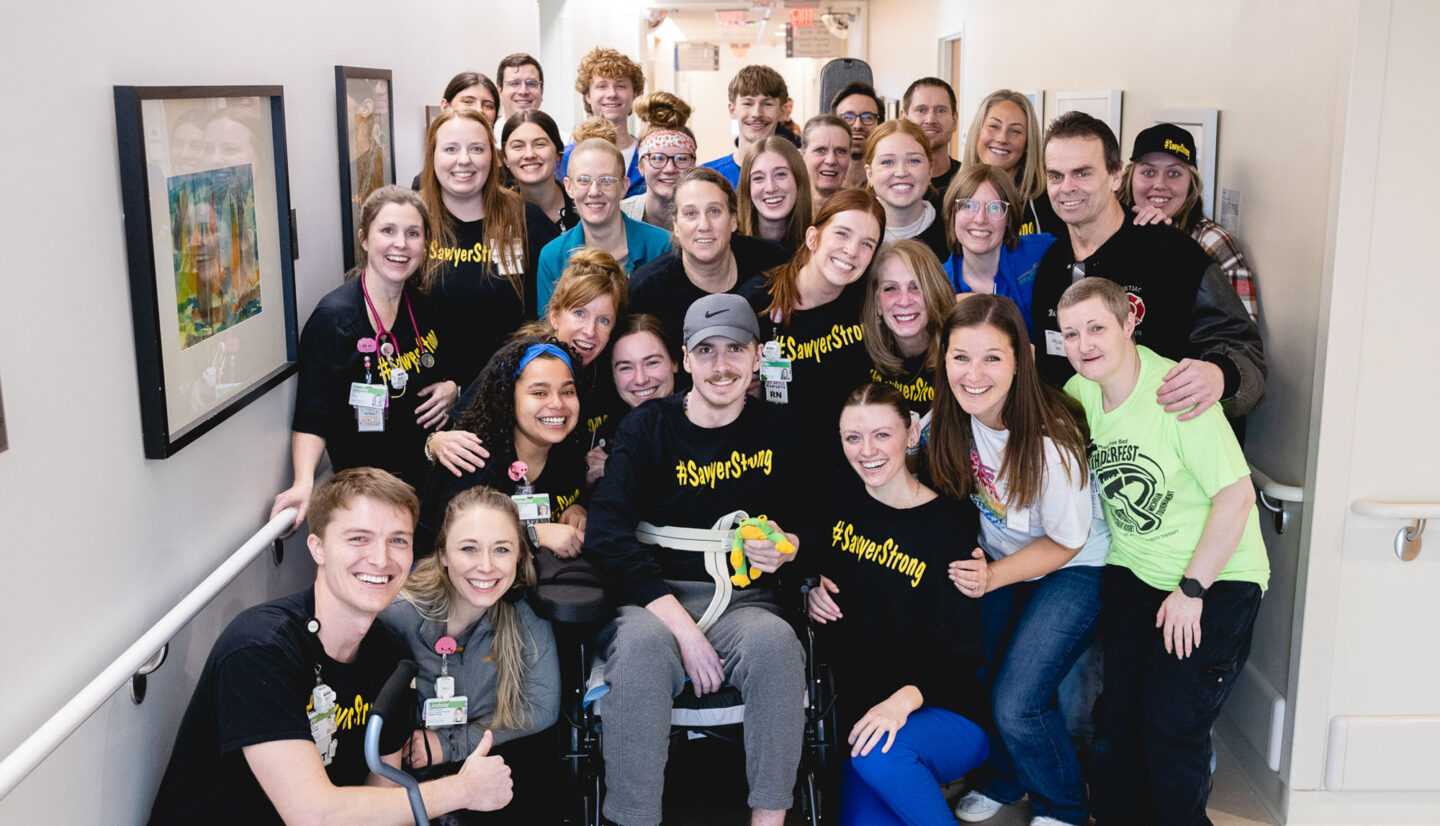Posted on November 9, 2015
Augmentative Communication provides options for speech
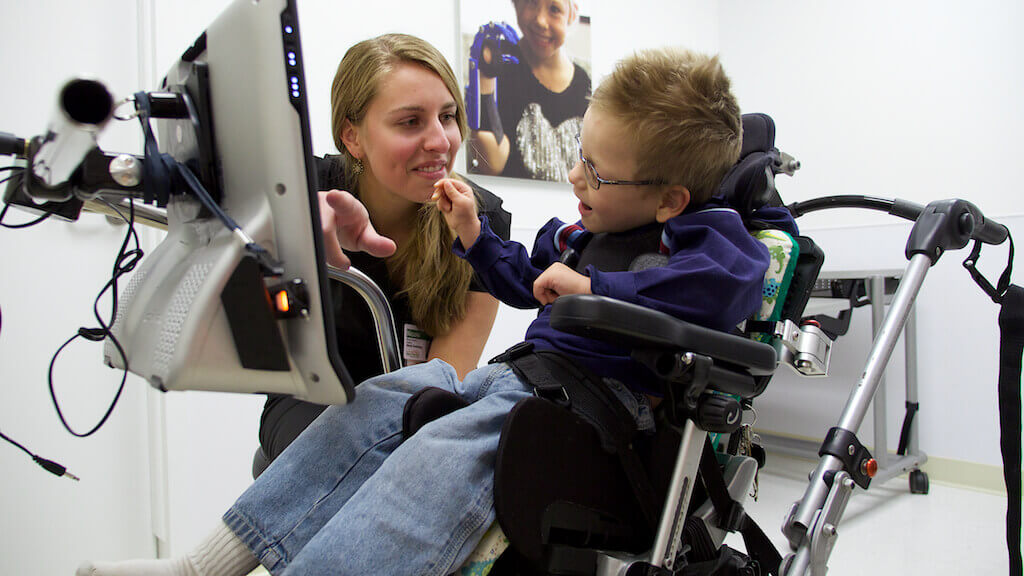
Augmentative and alternative communication can literally help to give a voice to individuals with diagnoses or conditions that can include amyotrophic lateral sclerosis (ALS), autism, stroke, cerebral palsy, Rett syndrome, muscular dystrophy, multiple sclerosis, traumatic brain injury and Down syndrome.
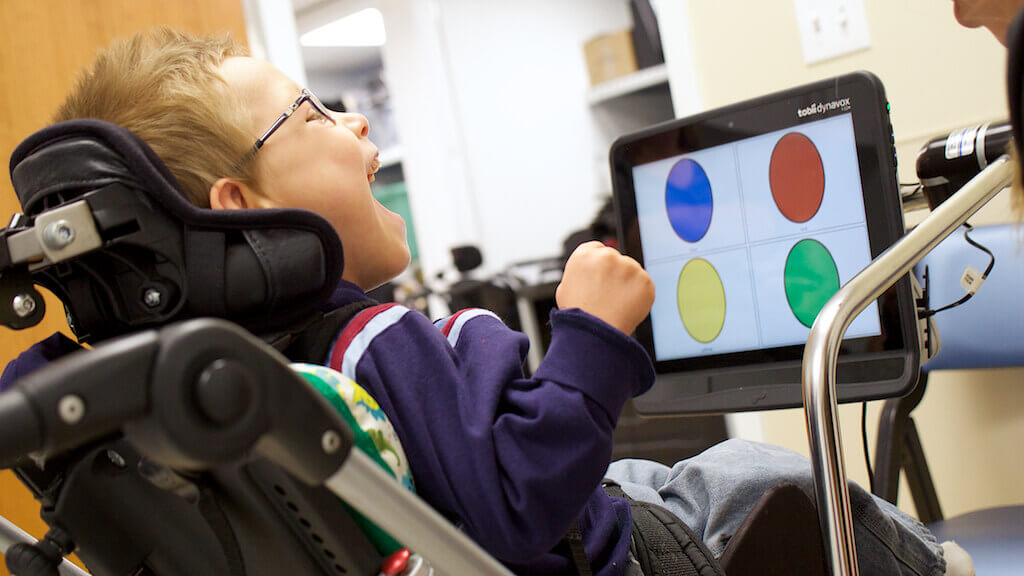 In Mary Free Bed’s Augmentative Communication Program, a speech-language pathologist and occupational therapist work with each patient to determine individual needs and goals.
In Mary Free Bed’s Augmentative Communication Program, a speech-language pathologist and occupational therapist work with each patient to determine individual needs and goals.
Communication device options can include everything from high-tech (computers controlled by eye gaze or head-worn mouse) to low-tech (picture boards).
Click here to read a story — published Sunday, November 8, 2015, in the Grand Rapids Press — about augmentative and alternative communication.
Call 616.840.8050 to learn more about the Augmentative Communication Program at Mary Free Bed. Or, attend the Talking With Tech event planned for Wednesday, November 11, from 4-5 pm.
